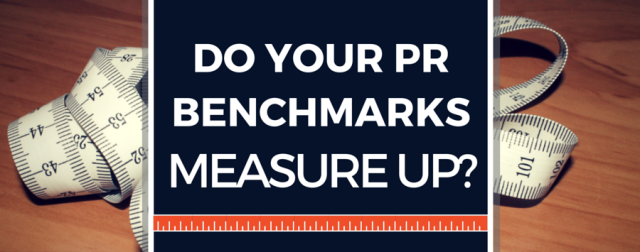| PR Newswire 
Social media. Mobile news apps. Television. Print publications. The range of media that people now use to access information is vast and expanding all the time. When measuring the fruits of your labor in earned media, are you tracking what you should? Traditionally, PR pros would look for big numbers. Common questions used to include: “How many eyes viewed this piece of earned media?” and “How can I link this increase in media pickup to an increase in revenue?” However, thought leaders in the measurement industry have now realized that when it comes to earned media benchmarks, it's not always about volume. It's about impact. Quality of earned media trumps quantity. Back when measuring media coverage was a manual process, the term "impressions" was coined to define how readers viewed or interacted with an article — that is, the "impression" it made. It was assumed that the higher the number of impressions, the more successful the story. However, access to more advanced and automated analytics tools — as well as changes in buyer behavior — have a caused a shift in measurement best practices. If you want to successfully engage with next-gen buyers, your quality of outreach — reaching audiences on the platforms they care about — is what matters. 
For instance, pretend you’re marketing an up-and-coming hotel to millennials, and a popular home and garden magazine mentions the hotel in one of their columns. Even if that columnist’s audience is huge, your hotel isn’t necessarily relevant to the audience’s interests. Perhaps the columnist’s audience skews older or prefers more traditional lodging. While you could argue the number of impressions this columnist generated for the hotel is substantial, those impressions might not result in more business. On the other hand, a guest on The Tonight Show Starring Jimmy Fallon gives your hotel a glowing review when asked about a recent trip. Knowing that Jimmy Fallon is popular with your target audience, you could consider this earned media to be higher quality. The news sites, social media, and entertainment your buyers consume help influence their future decisions on what to watch, do, and buy. Drive change in your audience by reaching them where they’re looking for information. Reassess your PR benchmarks for quality, not quantity. To determine whether your PR and marketing efforts are truly driving change, look at your current benchmarks and decide whether they still deliver the intel you need. Before launching a content program, product campaign, or major news announcement, look at previous media outreach and ask yourself these ten questions. Impact of media coverage 1. What percentage of media mentions appeared in your target media? 2. How many key corporate messages were covered (global growth, environmental sustainability, etc.)? 3. What was the coverage’s tonality? (i.e., what percentage of media covered your brand in a positive, neutral or negative manner?) 4. How much traffic did earned media drive to your company’s owned media channels? You can more effectively demonstrate ROI by aligning your benchmarks with your overall business and PR goals. Feature coverage in major publications 5. What percentage of media coverage was in the form of feature stories in top publications? 6. What percentage were passing mentions? Comparing feature coverage and media mentions will help you understand whether your stories are truly resonating with the media. If the media outlet deems your news big enough to feature, there is relevance for their readers. Earned media from press releases 7. How much coverage can you directly link to the press releases you issued? 8. To what extent were your press releases’ key messages included in media coverage? Identifying which press release tactics worked best can help you determine where there are opportunities to improve. Share of voice 9. How did quantity and quality of media coverage compare across internal business units, departments, etc.? 10. How did it compare to your competitors’ media coverage? Share of voice – or the percentage of total media coverage you received — can give you insight into which areas of your business are thriving and which have room to grow. Conversely, if you're measuring yourself against your competitors, you'll quickly see who is coming out on top. Maximize impact with your new benchmarks. Once you've answered the above questions, you're ready to start effecting change where it’s needed. My recommendation is to start with one area you're not happy with and A/B test different optimization tactics. For instance, let's say you’d like to improve earned media results from press releases. Consider how you could write or distribute those releases a little differently. How catchy is your headline? Have you missed a key media segment in the distribution you selected? Are you releasing your news at the best time of day or year? Once you've tweaked the press release variables that are within your control, do another measurement of earned media and you'll likely see a positive difference. Thanks to today’s sophisticated tools and advanced data, PR pros have a much clearer view into how their efforts are driving results and revenue. For even more measurement best practices, download our white paper Proving It: Going from Press Release Performance to Measuring Brand Perceptions. Author Rachael Dolan is the manager of PR Newswire’s media analysis team (also known as 'professional services'), a group of communications and industry experts in media and measurement. |